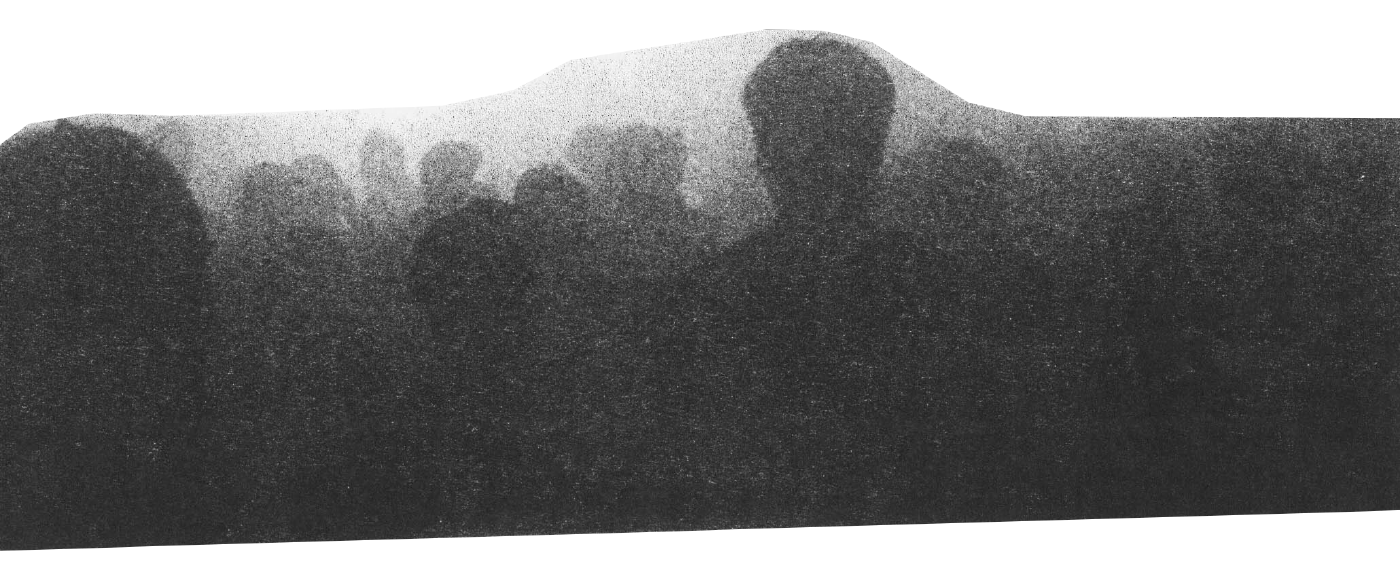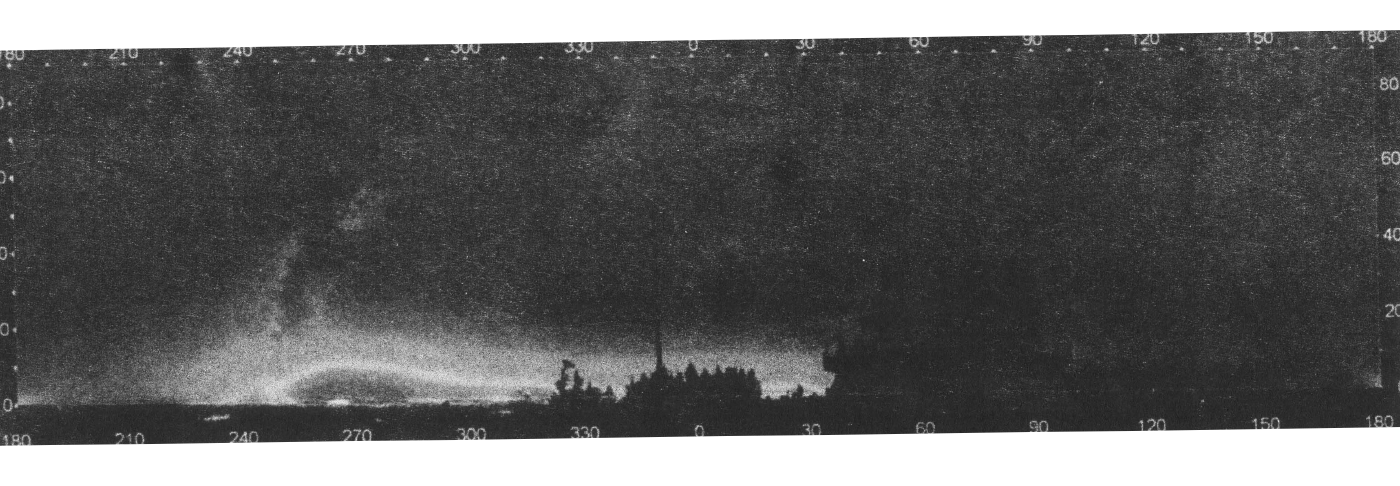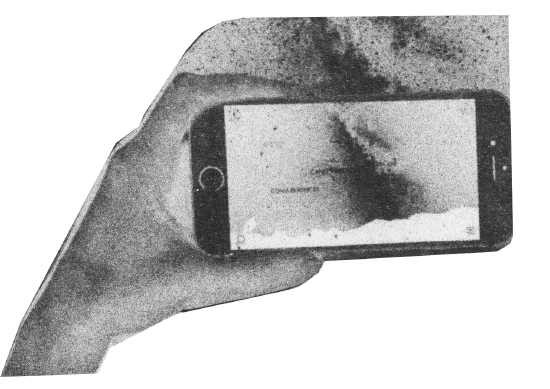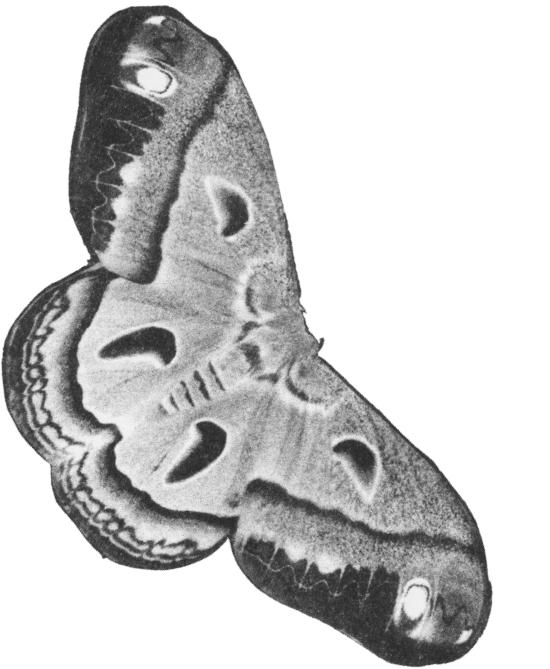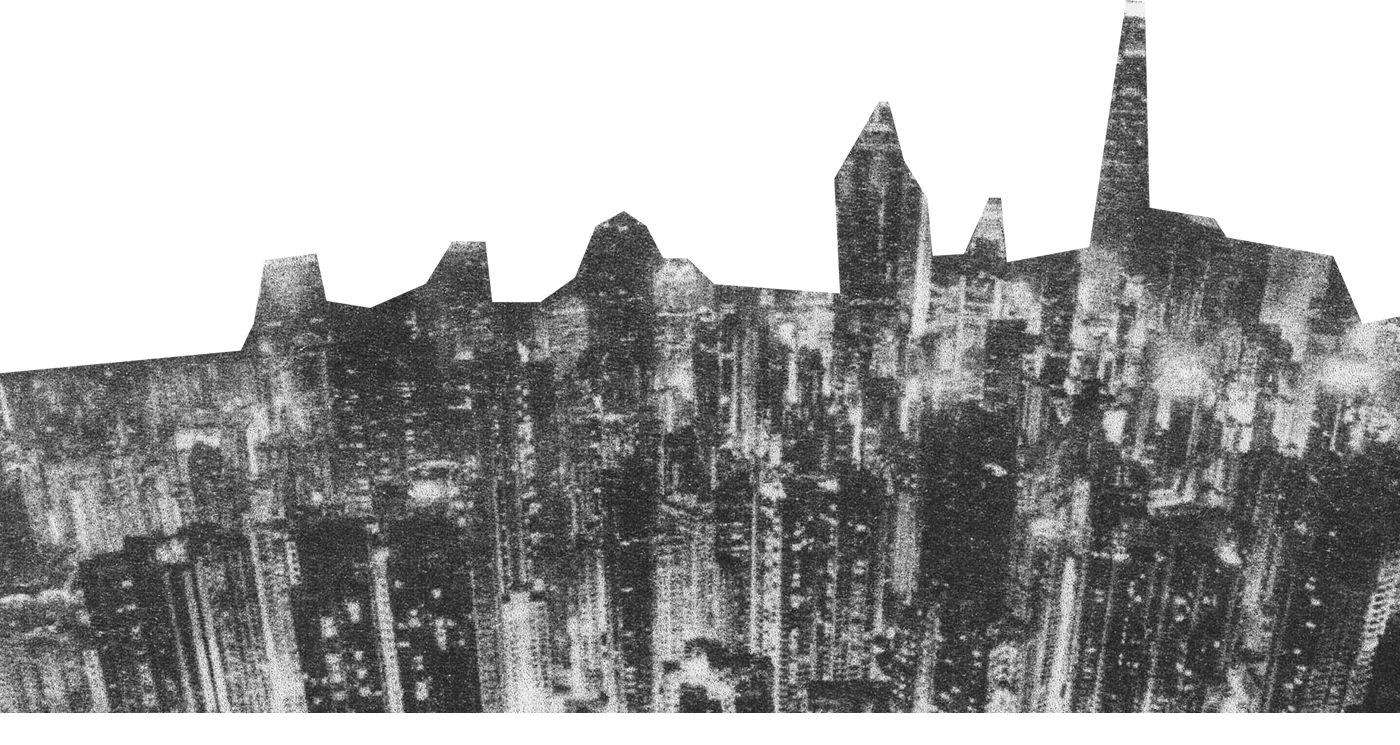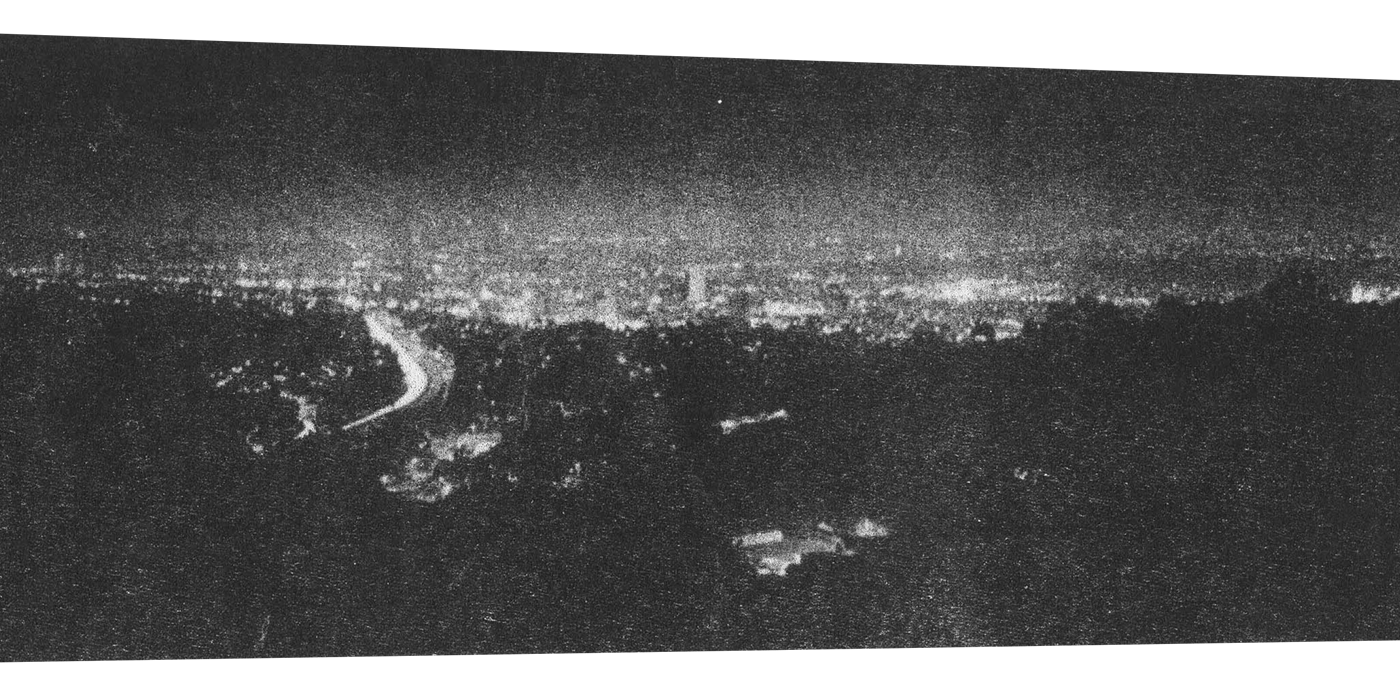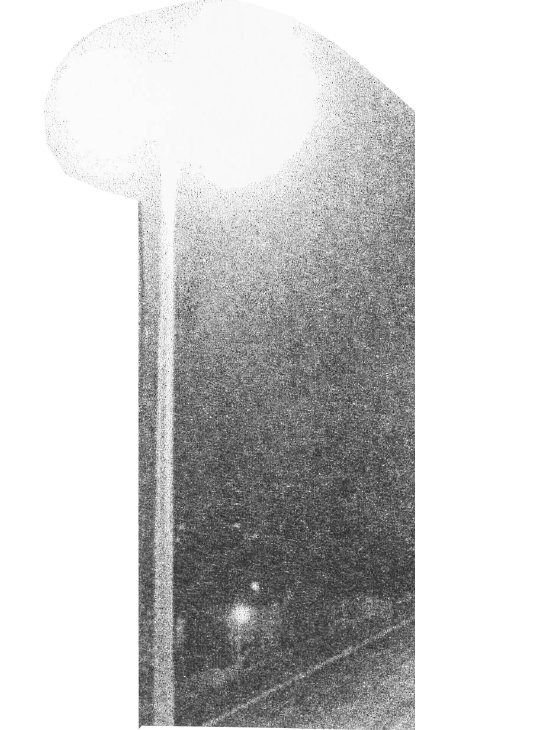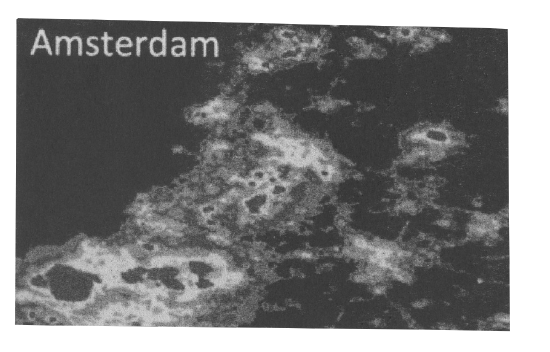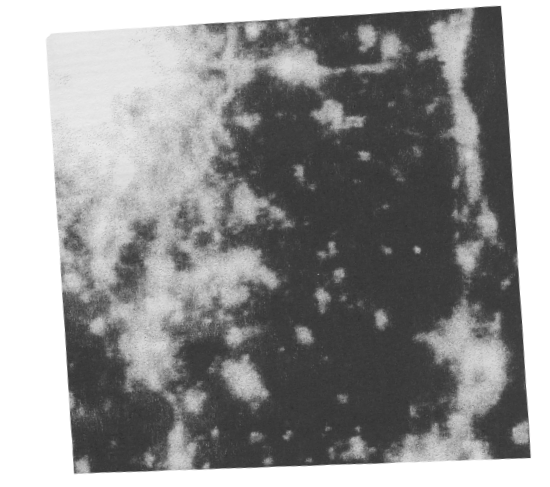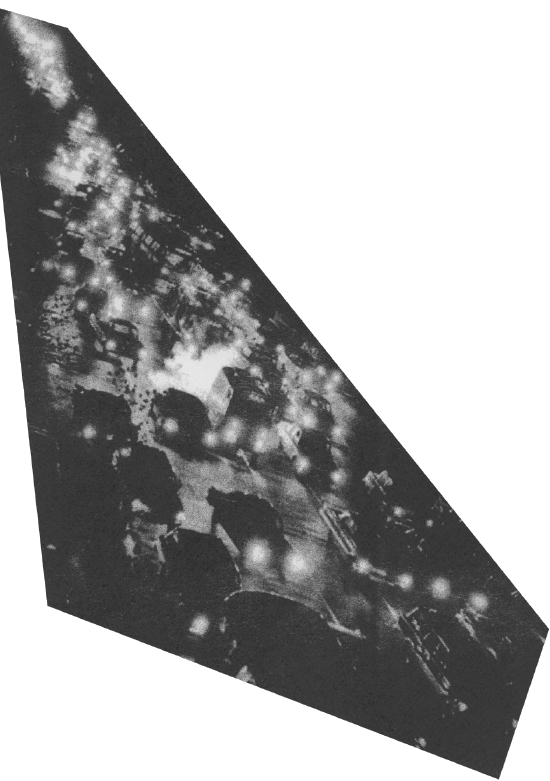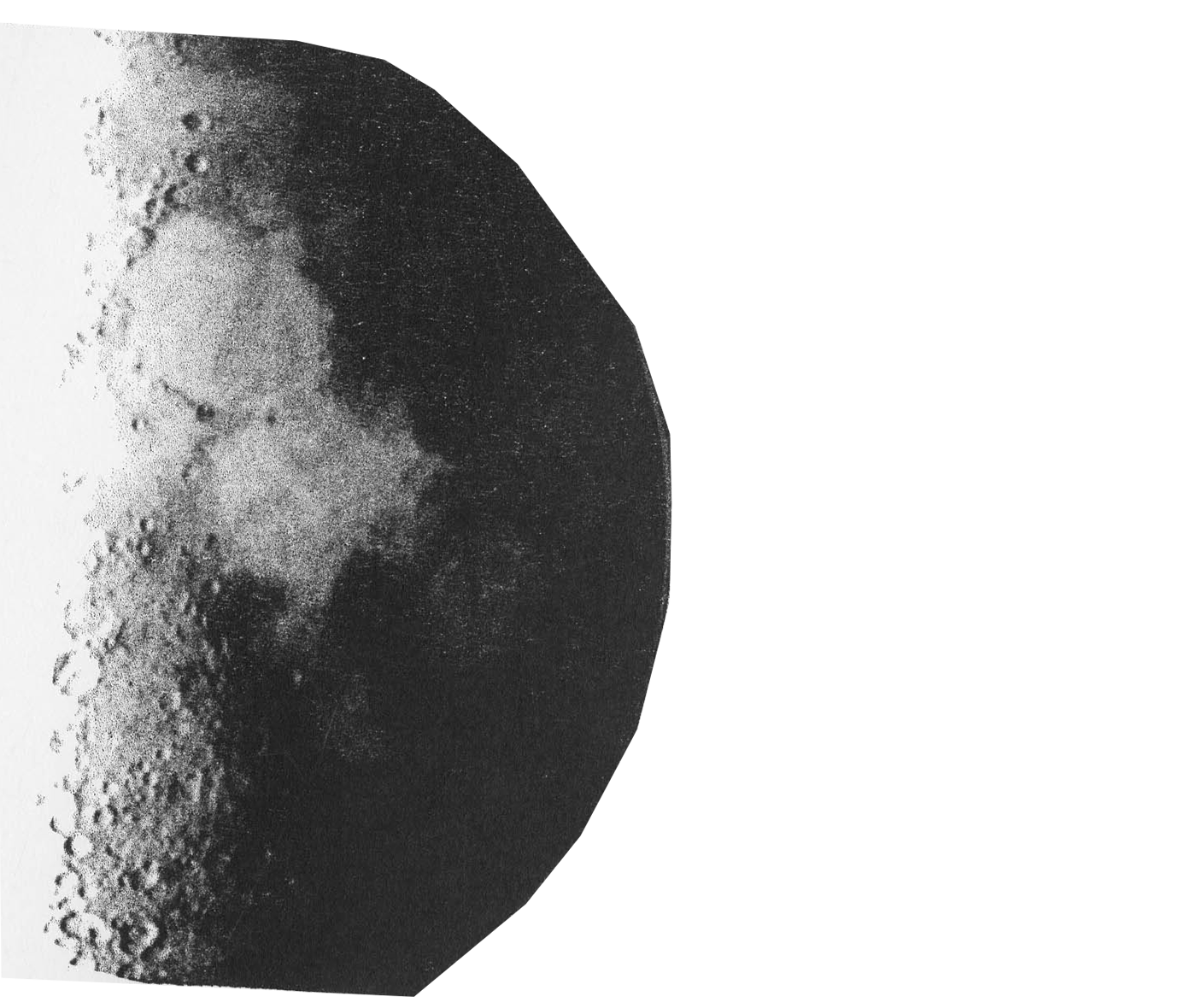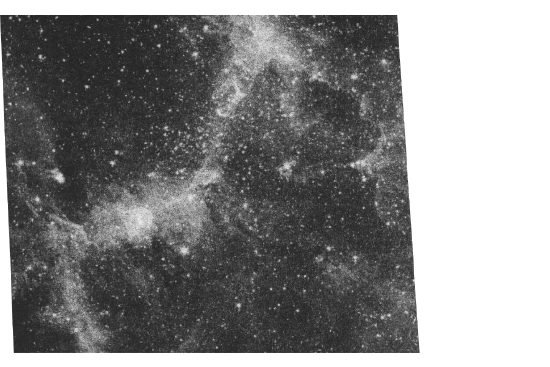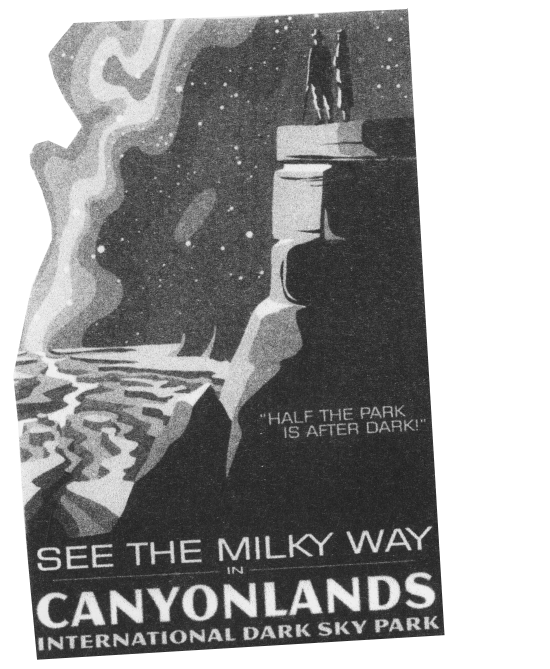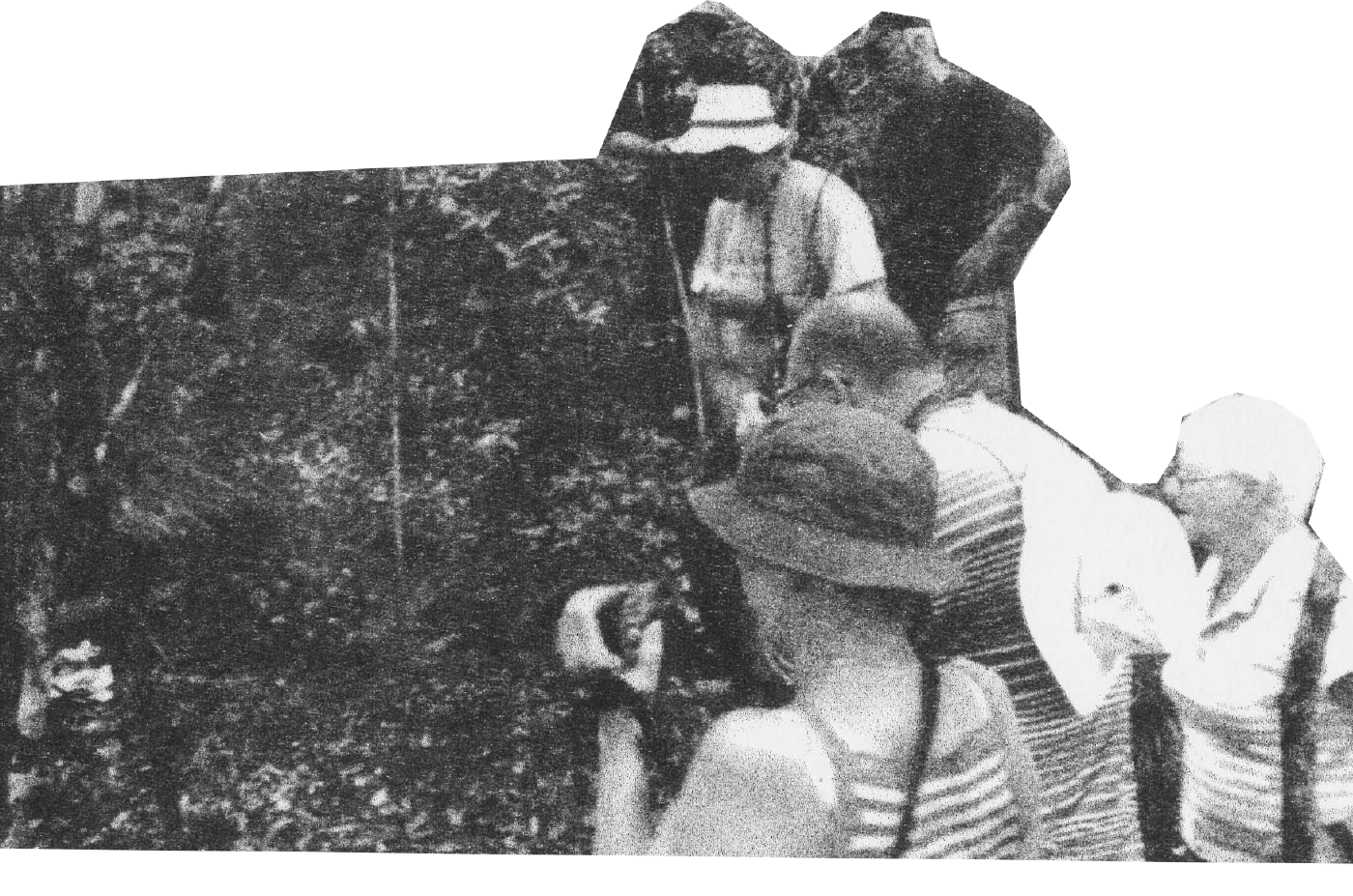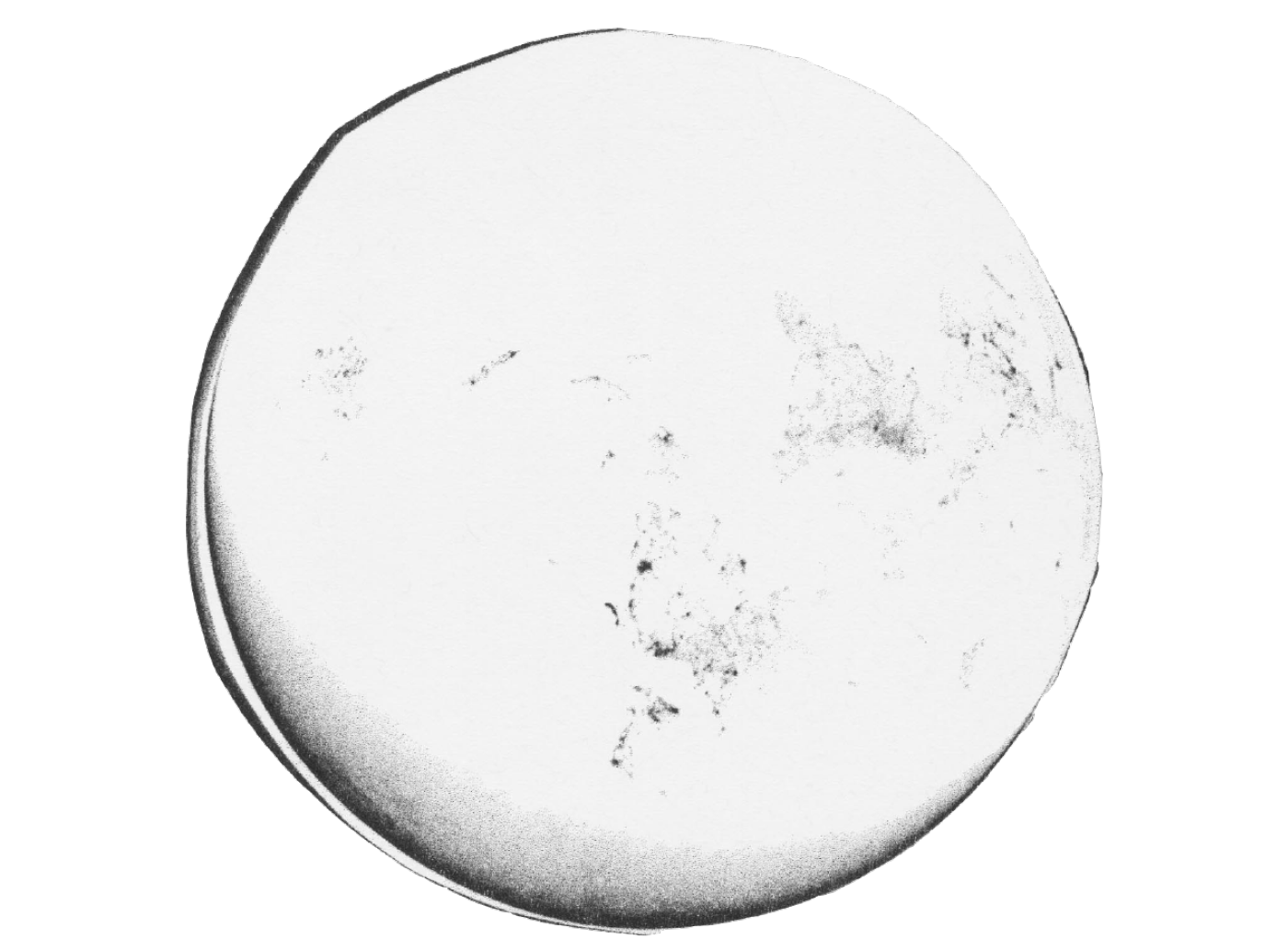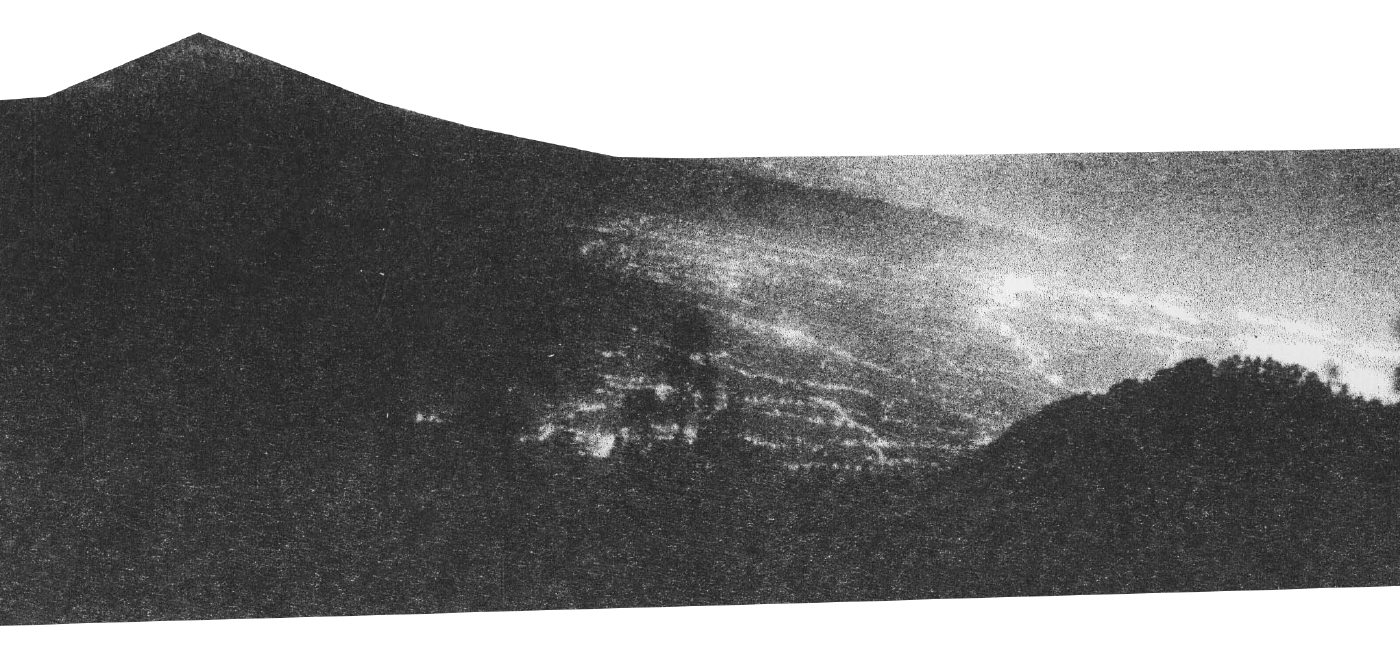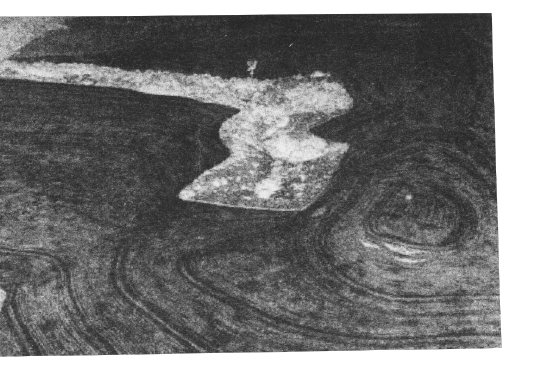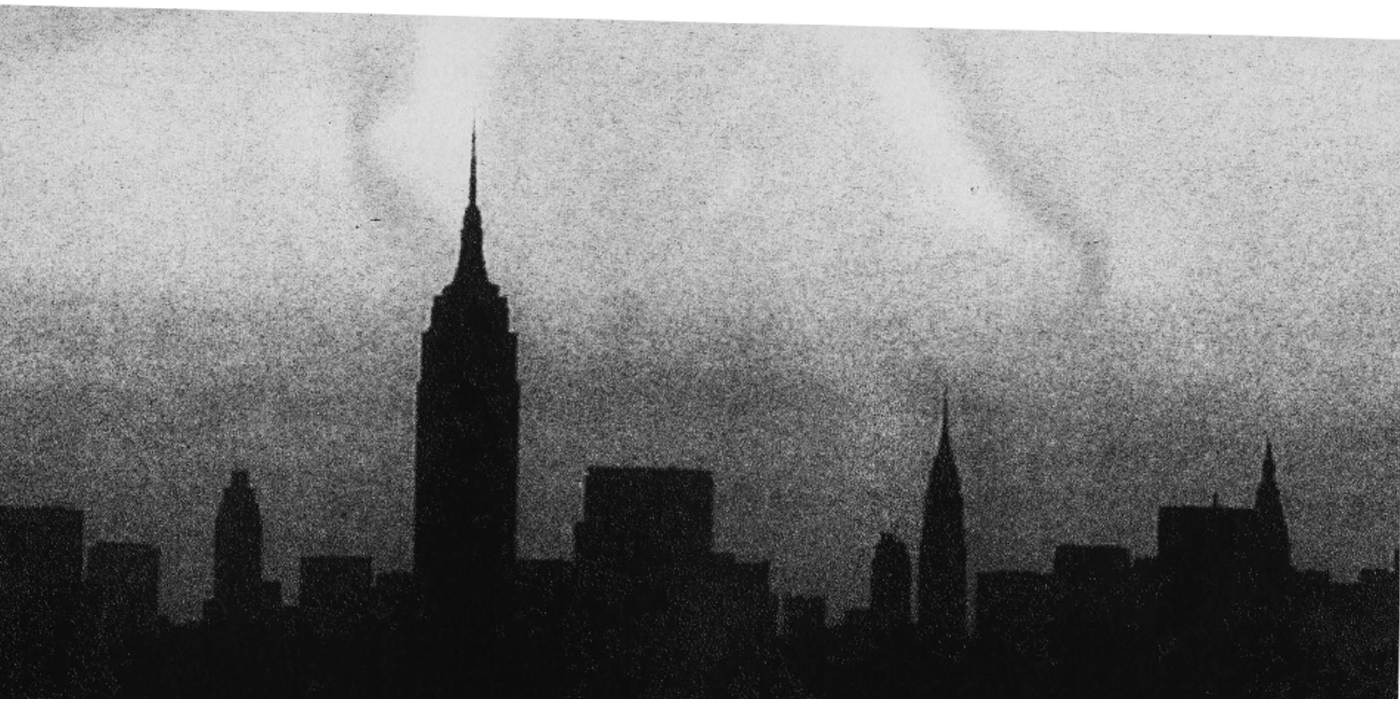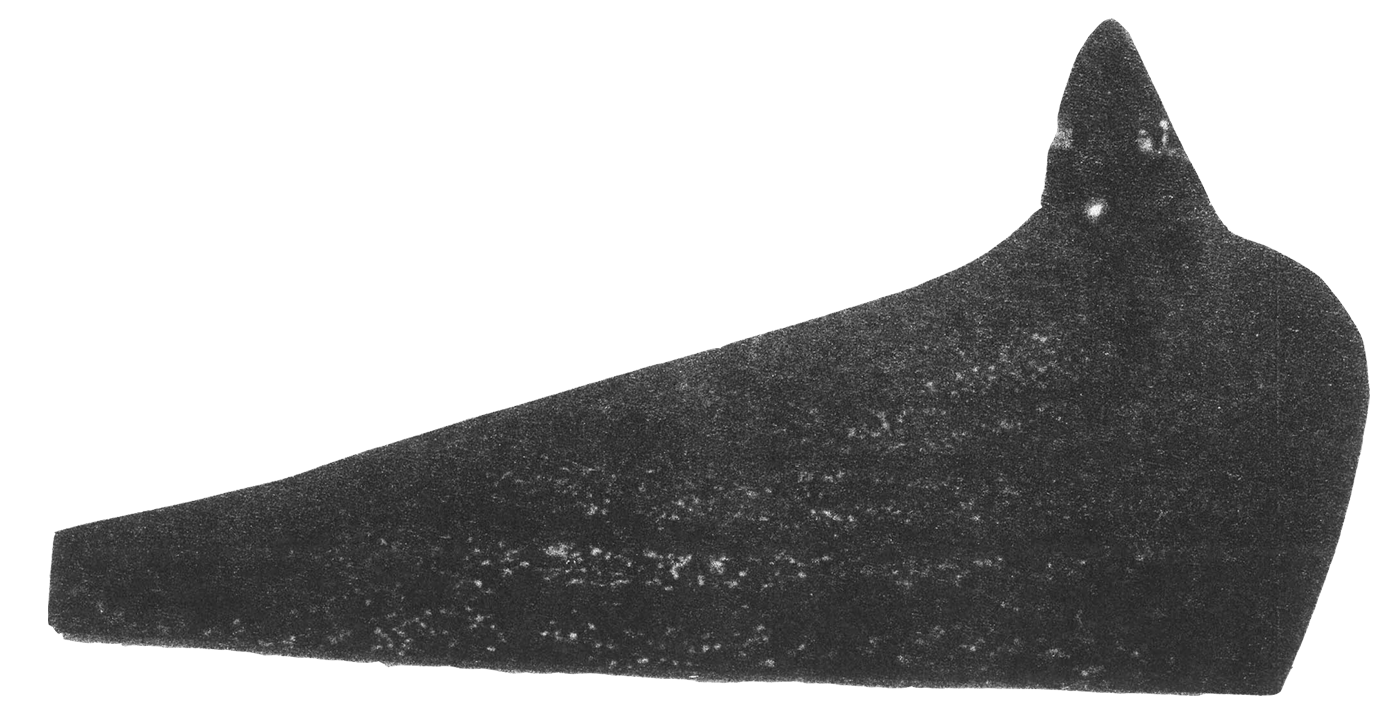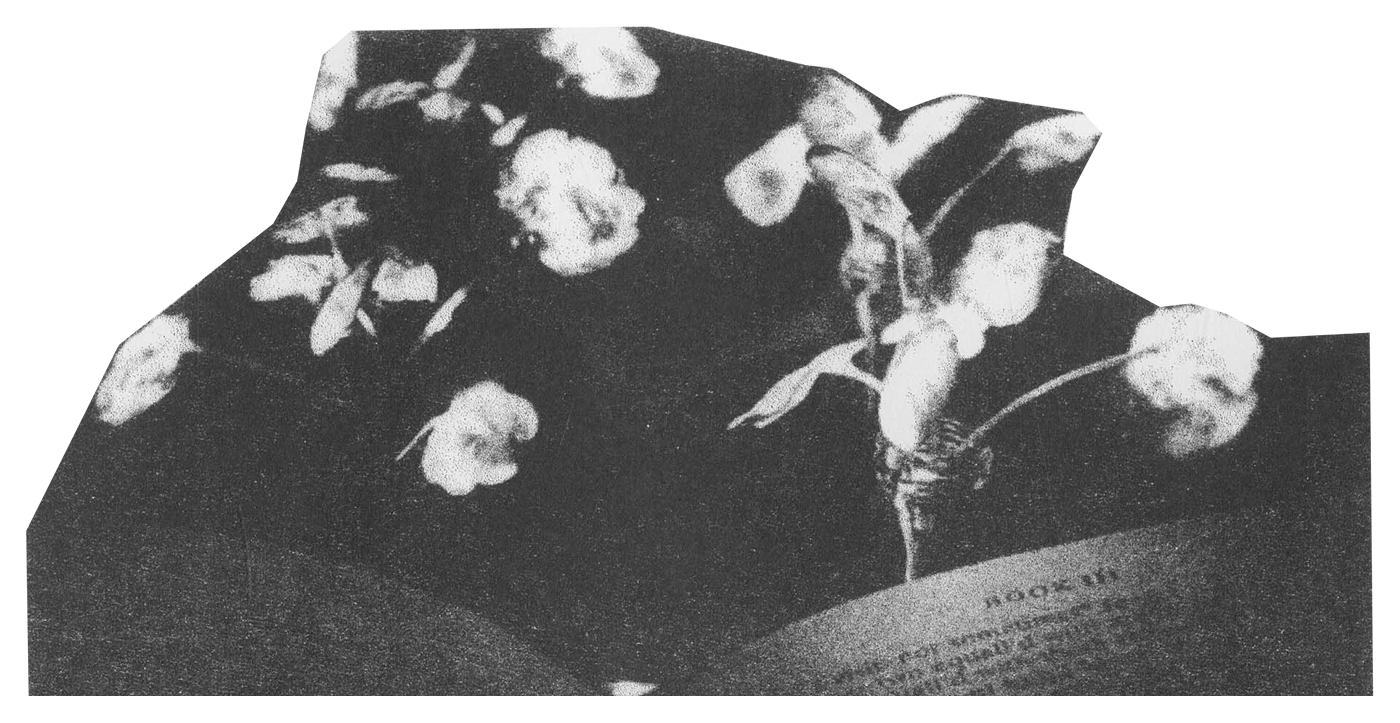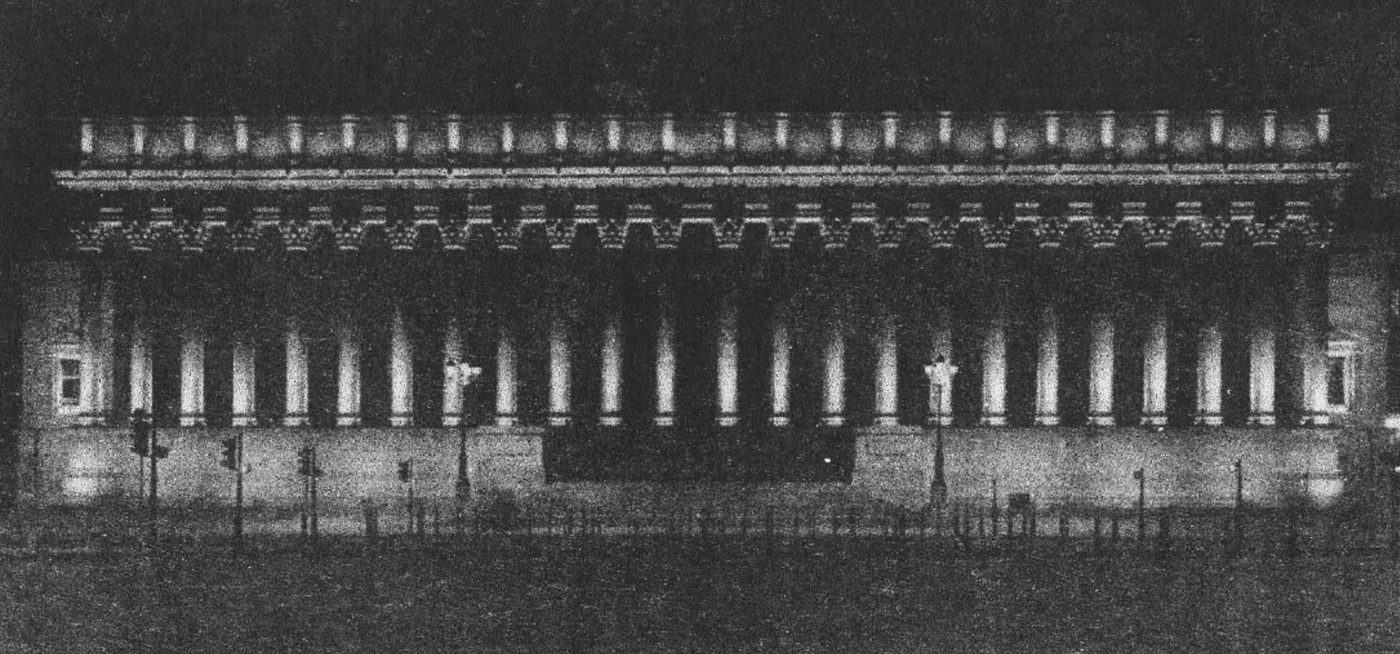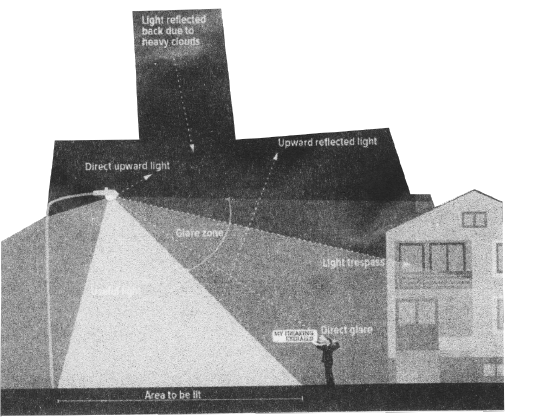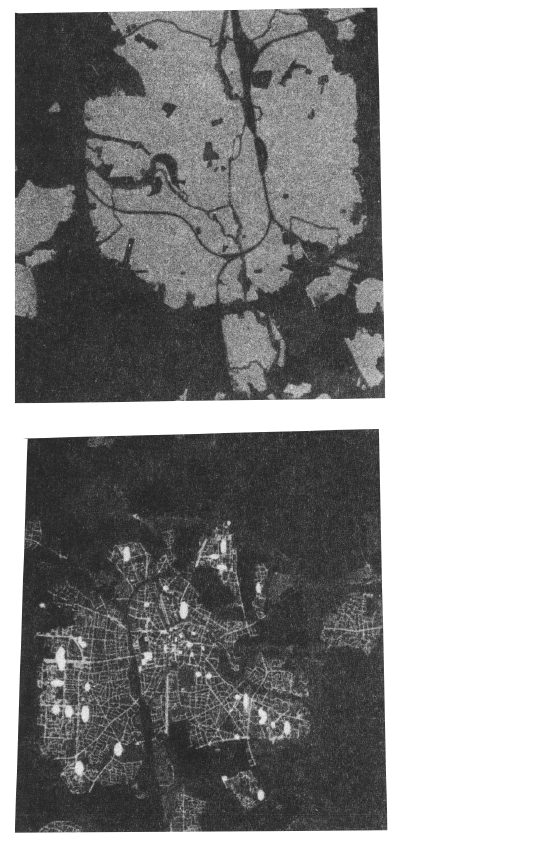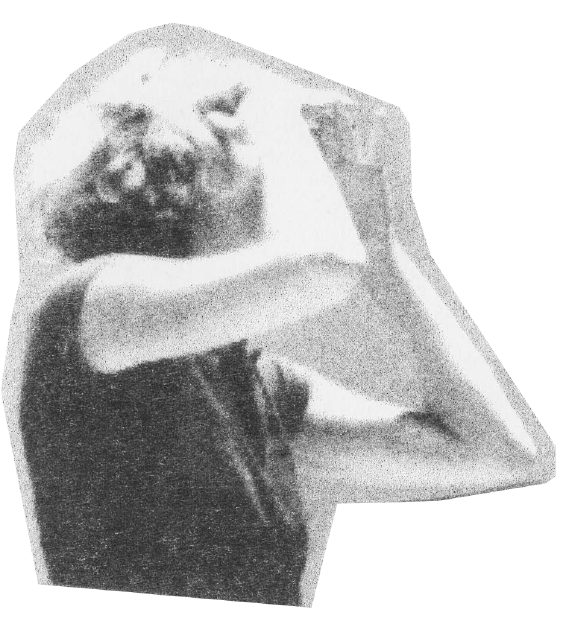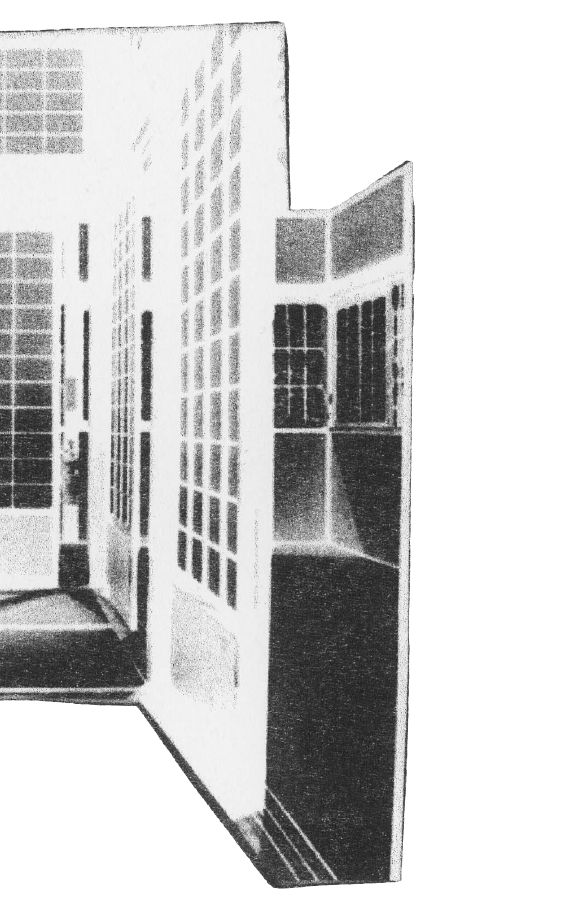So, in my opinion, bringing the darkness into the urban space means fighting two fronts simultaneously: first it is about organising cities’s illumination taking into accounts the issue of light pollution and secondly and most importantly it is about helping a societal change of mentality when it comes to our urban conception of darkness. The second point is of course extremely delicate since, as I have already mentioned, darkness negative connotation has been around for centuries. Fighting such a deeply engraved social construct is no small task. But I believe that it starts with words, paintings, poems, designs. Artists have always played a great role into depicting change and influencing certain ideas. And the issue of light pollution has started to spread among some of them which are now envisioning the return of darkness into the urban. It the case for instance of the firm “Concepto” who has imagined what they call “the dark grid” as the new urban illumination plan of the city of Rennes and Lorient in France. The “Dark Grid” is a wink to the french initiative of the green and the blue grid (TBV) which has been officially put into place in 2007. The idea of the TBV is to constitute and protect dense zones in which the biodiversity is preserved and find ways to connect them in order to allow the movement and travel of species and the blossoming of diversity and ecology. This project is of national scale and a major tool for land-use planning. Similarly the idea behind the dark grid of the firm Concepto was to gather data about natural or rural space which were already preserving the natural darkness at night together with those who were illuminated (mostly by roads) and create a plan of preservation and connexion of those nocturnal space to allow to the good development of the wildlife. Concepto imagined systems of illumination which are changing through time and seasons. In the urban space of Rennes they suggested that some spaces (such as university campus, supermarkets etc..) should be deprived of light during certain hours of the night. For parks or garden paths will are lit only when detecting human presence. In Lorient they decided to remove the road light of main entering highway which is surrounded by wildlife. surprisingly, the city received no complain at all from its inhabitants.
In a similar initiative, the two light designers Chris Lowe and Philip Rafael started what they called the “Dark Art Movement”. They explore the relation between dark and light in their designs and gave several talks and seminar around europe to bring awareness to the positive use of dark and shadows in lighting designs. They are defending ideas which resemble those of Junichiro Tanizaki who published in 1933 the beautiful text “Praise of Shadows” in which he express regret towards the spreading of the western illumination. He offers a magnificent depiction of the quiet and simple japanese house in which the right balance of light and dark provides a multitude of shadows of different magnitude. Through his text he immerses us in the beauty and celebration of darkness echoing the longstanding Danish tradition called “Hygge” in which people, with the use of candle and fire lights, create a warm and poetic atmosphere bringing people together around drinks and food. When I read about that danish tradition, funnily, it reminded me of the blackout which took place in my neighbourhood in Amsterdam in early 2018. It’s funny how very dependant we are on our lights. We are not used to being in a dark city. And even if all these lights at night are human made, artificial, there is something very much unnatural to this scenario. So you start looking for forgotten candles you might have used last christmas and if you’re lucky you’ll find a full pack somewhere hidden in a drawer. From your window you can see the dark flats in the facing buildings starting to reappear from the obscurity. Inside people’s home, candle lights. In some there are a lot, in others just a few. It creates a pleasing image. Peaceful, cozy. It brings out a feeling of home, community. You can be certain that during that power cut, your neighbours have helped each other so that nobody had to spend the whole evening in the dark. People whom you might have never met before smiled at you from their window in a sign of compassion and understanding. Everybody is going through the same thing, the same evening. It connects people that are sharing that experience. Brings back a sense of community in a city where you probably don’t know the person that lives above you.
This poetic image of the blackout might be just the one we need to recreate if we want to restore urban darkness. It also shows that bringing back darkness is not about making the city fully dark but simply darker. A beautiful example is the one kilometer long glow in the dark bike path created by the Designer Daan Roosegaarde - in collaboration with construction company Heijmans. As a tribune to the painting of Van Gogh “Starry Night” this cycle path near Eindhoven is working with solar panel technology and is just bright enough for the cyclists to see the road but dark enough so that it does participate to light pollution.
But not only solar technology shows promising results. In Massachusett, scientists have found a way to give plants the same luminescence of the fireflies. They believe that one day, with such technology, those plants will be able to illuminate a workspace. Not only the emission of such light would be less dramatic for light pollution, but just as the solar panels it could help us restrict the energy waste. And tackling the angle of energy waste to talk about light pollution is another way designers and artists are raising awareness. Firms such as german based Studio Füssun have been demonstrating the waste we spend over all night illuminated buildings and monument during the Architecture Biennale of Venice in 2008 by shutting off the night lights of the German Pavilion in Berlin and reusing the same amount of energy into a room. People walking in the room could better understand, feel and visualise (if they could even open their eyes!) what that energy actually represents in term of voltage and power.
In Lyon, the architect Jérôme Donna worked on the nightscape of the courthouse. This impressive building has been an emblem of the city since it was built in the 19th century. In order to save energy and reduce the light pollution Donna came up with a beautiful solution to light this monument. He worked on a temporal nightscape in three stages throughout the early night. Each stage is a different way of illumination, and so a different vision of the building for the spectator. Stage one, from nightfall to 22h30, shows the magnitude of the building. It is completely lit up. Stage two, from 22h30 to 23h30, illuminates the columns only. Stage three, from 23h30 to midnight, also puts the focus on the columns but this time it is using an effect of black light by lighting the long wall behind them. And finally at midnight the show ends and is swallowed by darkness. The courthouse will reappear the next morning with the first light of sunshine. But that’s not the only good reason to visit Lyon. The light festival “ La fête des Lumière” attracts millions of visitors each year. It has been promoting street lighting with eco-friendly solutions and technologies during four nights of beautiful shows of illumination and innovative ideas.
As you can see from these various examples, the design and art community are trying to find solutions to shine a different light on darkness. Through single events, performances, research, ideas and old traditions they all have the same objective: changing our vision of darkness to reimplement it as something good that deserve a space in our urbanised world. On a wider cultural spectrum I think it is important to also mention people such as James Bridle. He recently published a book called “the New Dark Age” talking about computation and understanding of humanity through data. He argues that despite informations being so accessible we are living in what he calls “the new dark age”. Even though he is dealing with a different type of darkness, the technological darkness, he is also calling for a rembracing and understanding of that darkness. In a way one may say that he is rethinking technology in a similar way to how Daan Roosegaarde might have been rethinking the bike paths.
I also believe that artists such as for instance Pierre Soulage, who worked on the color black using light to reveal different reflections in the color and wrote many essays and theories about the role of darkness and light, can influence our conception of darkness. It is not only about design but also about art and words. We must not forget what power language holds on social constructs. Changing our negative conception of darkness also asks for us to try and change it through words. The novelist Ben Lerner for instance depicted a beautiful and poetic image of the impressive blackout in New York which occurred in 2003. We could also mention the name of one of the master of the Sandberg Institute in Amsterdam called “the Shadow Channel” in which students seem to reclaim the darkness. All those more indirect references count to bring to the public a more positive or at least different perception of darkness.
